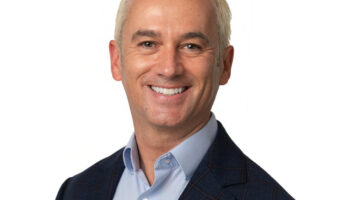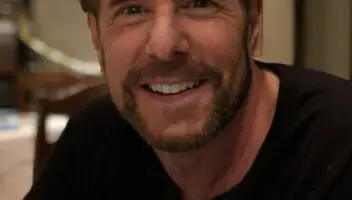- May 28, 2023
- by Travis Atkinson
- in Jeffrey Young, Schema Therapy, Schema Therapy Training
- Comments are off
Have you ever felt stuck with a challenging client, wishing you had more advanced techniques to catalyze change? Most therapists encounter stubborn cases that resist progress with conventional methods. Schema therapy can be the missing key that unlocks transformation for even your most “treatment-resistant” clients.
This integrative method strategically combines the most effective elements of proven modalities – cognitive, behavioral, attachment, gestalt, and psychodynamic – for targeted interventions across diagnoses. Built on over 30 years of empirical research, schema therapy achieves rapid progress by addressing deeply entrenched mental patterns and unmet core emotional needs that are especially helpful when treating personality disorders.
Join us online at the Schema Therapy Training Center of New York (STTCNY) to master this cutting-edge approach through our engaging digital courses, comprehensively designed to fulfill certification requirements for coursework from the International Society of Schema Therapy (ISST). Our globally recognized certification program equips therapists worldwide with potent new skills to facilitate breakthroughs, even when treating personality disorders and intense coping styles.

The Limitations of “One-Size-Fits-All” Therapy
Many therapeutic models follow a one-size-fits-all approach, applying generalized techniques to diverse clients. But rigidly manualized treatments often fail clients with ingrained or complex mental patterns — common when addressing maladaptive coping styles, such as treating borderline personality disorder. Cookie-cutter methods fail to provide the broad coverage needed for challenging clients.
Schema therapy offers a customizable alternative. By assessing how early life experiences and unmet emotional needs manifest in an individual’s entrenched cognitive schemas, schema therapy targets the transformation of a client’s unique inner world and early maladaptive schemas. Relief finally seems possible, even for those previously deemed “treatment-resistant.”
Schema Therapy: An Empowering Integration
Schema therapy’s versatility can enhance outcomes across diagnoses by integrating the most effective elements of proven modalities. It strategically weaves together:
– Cognitive-behavioral techniques: to modify dysfunctional thoughts, core beliefs, and behaviors
– Attachment principles: to fulfill unmet childhood and emotional support needs and establish healthy relationship patterns
– Gestalt methods: to elicit emotion and process the past in the present
– Psychodynamic approaches: to explore childhood wounds and transferential dynamics
This biopsychosocial model contextualizes a client’s struggles while providing adaptive coping style skills. True healing can occur holistically addressing the mind, body, and relationships in schema therapy.
Targeting the Roots: Early Maladaptive Schemas
At schema therapy’s core is the concept of early maladaptive schemas — deeply entrenched patterns of interpreting reality that originate in unmet childhood needs. When these schemas persist unchanged into adulthood, they perpetuate psychological suffering and unhealthy dynamics.
Schema therapy aims to help clients recognize these self-defeating life patterns driven by their early maladaptive schemas stemming from youth, then gradually dismantle them through schema healing work. Targeting schemas resets mental models on a fundamental level, including key themes related to personality disorders, allowing more adaptive views of self and world to emerge.

Healing the deepest roots of mental patterns allows new growth to flourish.
Customizing Treatment with Schema Modes
While early maladaptive schemas represent ingrained patterns, schema modes describe shifting emotional states and coping styles or responses — a framework that is especially helpful for personality disorders and relevant to all clients. Identifying a client’s dominant schema modes reveals pathways to meet their needs in therapy.
Common schema modes include:
1. Vulnerable Child Mode: Picture a tiny, scared kiddo inside, craving safety and love; this mode embodies our deepest fears, hurts, and unmet needs from childhood.
2. Detached Protector Mode: Think of this as our emotional armor—whenever things get too intense, this mode swoops in, numbing feelings and distancing us from pain, but often also from connection.
3. Punitive Parent Mode: This is that inner critic turned up to eleven, always ready to chastise and berate, echoing those harsh voices from the past that told us we weren’t good enough.
4. Healthy Adult Mode: Imagine the best version of yourself—calm, confident, and caring. This mode knows how to balance emotions, make wise choices, and offer love to the self and others.
Attuning interventions to the active schema mode allows an individually-tailored healing journey that can dramatically change personality disorders. Schema therapy aims to strengthen the healthy adult mode as the “hub” of a wheel that can meet the needs of all other modes, also known as coping styles in the model, and treat personality disorders that make up other serious mental health conditions and other mental health concerns altogether.
The healthy adult mode works to address the needs of all the other modes, which can be categorized into 4 core groups:
- Child Modes: Child modes represent our vulnerable and emotional states, often rooted in childhood experiences.
- Maladaptive Coping Modes: These are our defensive strategies—ways we’ve learned to protect ourselves, even if they’re not always healthy.
- Compliant Surrenderer Mode: Picture this mode like an echo chamber for our deep-seated beliefs, often those stemming from schemas. When activated, it wholeheartedly buys into the schema, acting “as if” it’s the undeniable truth. In doing so, it surrenders to and reinforces the schema’s narratives, even if they’re not in our best interest. For instance, a self sacrifice schema is coped with by taking care of someone else you feel is fragile or vulnerable without considering your own needs, resulting in feelings of resentment that are correlated with the self sacrifice schema.
- Protector Modes: Consider these the sentinels of our emotional fortress. In moments of true danger or threat, they can be our most reliable allies, adapting to defend us from harm. But, more often than not, these protectors get a bit too vigilant. Even in safe situations, they jump into action, unintentionally keeping us from emotions and experiences essential for growth and healing. While they come in various forms, such as avoidant or detached, they all aim to shield us from perceived emotional threats. A schema drives the protector mode. For instance, the emotional inhibition schema drives a detached protector mode stopping a client from taking risks in relationships. Their emotional inhibition is reinforced because they never get to disprove the schema, as they avoid the negative aspects resulting from not getting close to people. The challenge is recognizing when they’re overstepping and confronting them, so we can genuinely progress beyond our ingrained schemas.
- Overcompensator Mode: Imagine a seesaw constantly tipping to one extreme. Driven by underlying schemas often unbeknownst to the individual, this mode fiercely tries to counteract feelings of inadequacy or past wounds. Defectiveness and emotional deprivation schemas lead to overcompensation modes for many people, including narcissistic personality disorder, a specialty of schema therapy. Overcompensator modes can manifest destructively, taking forms like bully attack, self-aggrandizer, or predator modes. Here’s where the power of schema therapy truly stands out. Traditional therapeutic techniques tend to flounder with this coping style. Only robust strategies, adept at addressing the overcompensator mode, ensure the therapist remains anchored, preventing them from being overwhelmed by its intensity.
- Dysfunctional Parent Modes: These internalized voices are often harsh, echoing negative messages from our upbringing or environment.
- Healthy Adult Mode: The balanced, mature part of us.
The model leans heavily on the therapeutic relationship, modeling the healthy adult mode to “reparent” clients and their coping style common with impaired limits, impaired autonomy,
Schema Focused Cognitive Therapy: An Evidence-Based Method
With over 30 years of empirical research supporting its effectiveness, in a systematic review, schema therapy qualifies as an evidence-based “well-established” approach per APA criteria. Studies demonstrate schema therapy’s exceptional outcomes with mental health professionals across multiple populations, including:
– Borderline personality disorder: Schema therapy is endorsed by the UK’s NICE as a first-line BPD treatment. A multicenter randomized controlled trial shows that 70% of BPD clients recover with schema therapy.
The “Big 4” psychotherapy models for treating borderline personality disorder each bring a unique focus.
- Dialectical Behavior Therapy (DBT) emphasizes a balance of acceptance and change, offering tools for emotion regulation and improved interpersonal dynamics.
- Emotion-Focused Techniques delve into understanding and reshaping emotional processes, assisting clients in better navigating their feelings.
- Cognitive Behavioral Therapy (CBT) pinpoints and challenges negative thought patterns, empowering individuals to reframe and overcome unhelpful beliefs.
- Schema Therapy dives deep into early life experiences and foundational beliefs, addressing the ingrained patterns that persistently influence one’s behavior and emotions.
– Chronic depression: Multiple studies confirm schema therapy’s effectiveness in reducing depressive symptoms relative to treatment-as-usual or CBT.
– Couples: Schema therapy improves couples’ relationship satisfaction and reduces negative communication patterns.
– Trauma: Schema therapy reduces post traumatic stress disorder (PTSD) symptoms and emotional distress for complex trauma survivors by targeting unhelpful coping modes.
– Eating disorders: Initial studies and clinical observations suggest that schema therapy can effectively address the deeper emotional and cognitive patterns that underlie eating disorders, especially for those who hadn’t responded well to more traditional treatments.
With a robust evidence base validating its transformative impact, schema therapy is increasingly recognized as a key intervention for challenging cases.
When diving into schema therapy, practitioners have a suite of beneficial assessment tools at their fingertips, designed to conceptualize individuals and couples. These instruments ensure that treatment strategies are precisely tailored to clients’ unique needs. Among these is the renowned Young Schema Questionnaire, crafted by Jeffrey Young. This tool is like a detective for your psyche. It’s designed to sniff out ‘early maladaptive schemas.’ We can view schemas as deeply-held beliefs about ourselves and the world that began in childhood or adolescence. They’re the silent puppeteers, often pulling the strings behind our feelings and behaviors. These beliefs can sometimes be a bit, well, misguided. For instance, thinking, “I’m never good enough” or “People will always abandon me.” This questionnaire beautifully categorizes these into several ‘schema domains’, making it easier to pinpoint where those sneaky core beliefs might be lurking.
Schema therapy also uses the Schema Mode Inventory (SMI), a collaborative assessment tool co-authored by Jeffrey Young, Travis Atkinson, Arnoud Arntz, Jill Lobbestael, M. Weishaar, Michiel van Vreeswijk, and J. Klokman. If the Young Schema Questionnaire is our detective, consider the SMI the insightful therapist! It helps identify the modes or parts of clients that spring into action based on their schemas. Maladaptive schemas form modes similar to characters in a play – the “vulnerable child” feeling lost and, well, vulnerable, or the overprotective “guardian” trying to shield that child. By understanding these modes, practitioners can strategize how to take on coping methods, aiming for adaptive behavior that rewards the self, boosts self-esteem, and reduces emotional dysregulation. If you’re a psychotherapist, Jeffrey Young has a practitioner’s guide detailing how an early maladaptive schema forms and the best ways to address a schema mode. The practitioner’s guide was published in 2006, and several other books have been published to help take on schema beliefs.
Next time you wonder why you react a certain way or why some emotions feel overpowering, remember: it might just be those schemas and modes at play formed from core beliefs and life experiences. And thanks to these assessment tools, we’ve got a roadmap to understanding and transforming them while rewarding adaptive behavior for improved mental health.

Unlock Your Potential as a Schema Therapist
Are you ready to take your practice to the next level by incorporating schema therapy’s proven techniques? STTCNY delivers in-depth training and certification programs online for superior flexibility.
Choose from courses including:
Certification Program in Schema Therapy for Individuals
Comprehensive instruction equips you to implement schema therapy for individual clients struggling with personality disorders, chronic depression, anxiety, addiction issues, and complex trauma.
Certification Program in Schema Therapy for Couples
Master specialized techniques to enrich schema therapy for couples, addressing attachment ruptures, childhood wounds, intimacy barriers, destructive conflict patterns, infidelity, and other everyday struggles.
STTCNY’s online schema therapy training integrates cutting-edge technology and science-backed teaching methodologies for transformative learning. Experience in-depth courses, including video demonstrations, engaging discussions, and hands-on role plays to cement mastery.
Upon completing our certification programs (and fulfilling supervised practice requirements), you can achieve credentialing as Standard or Advanced for Individuals and Couples by ISST, unlocking a significant degree of professional advantages.
Join a Global Community of Healers
At STTCNY, we believe that collectively, we are stronger. Connect with fellow therapists worldwide who share your passion for expanding mental healthcare possibilities.
Participate in thought-provoking discussions, collaborating to deepen the clinical applications of the model. Share your insights from integrating schema therapy into your practice while learning from others’ experiences.
Whether you are a seasoned professional or starting, our close-knit learning community supports and inspires your ongoing development. Unite with us to keep actualizing your potential as a healer.
Meet Our Passionate Founder
Travis Atkinson, LCSW, LICSW
Founder & Director of STTCNY
A leading schema therapy expert and clinician, Travis Atkinson is the Founder and Director of the Schema Therapy Training Center of New York. His 25+ years of experience developing mastery in schema therapy infuse the STTCNY curriculum with extensive knowledge and real-world insights.
Travis’s journey with schema therapy began in 1995 when he started training directly under the approach’s esteemed founder, Dr. Jeffrey Young. His commitment led him to become a staff clinician at Dr. Young’s Cognitive Therapy Center of New York in 1998, where he worked alongside Dr. Young and other experts for over a decade, refining his skills.
In addition to his clinical work, Travis serves as a distinguished lifetime Honorary Member of the International Society of Schema Therapy (ISST), where he was the media coordinator on the executive board from 2014-2020. His influence has been instrumental in the rapid advancement of the model worldwide.
Travis’s unwavering passion for empowering fellow healers with schema therapy’s transformative power inspired him to establish the STTCNY. Join us to benefit from his extensive knowledge and trailblazing insights aimed at enhancing your impact and fulfillment.
Client Success Stories
“This treatment changed my life”
Michele
“I struggled with low self-worth, depression, and volatile relationships my whole life. Despite years of therapy and meds, nothing shifted these painful patterns – until I began schema therapy. Learning how my childhood experiences had shaped my schemas helped everything finally make sense. Schema therapy gave me the tools to dismantle lifelong traps. Instead of just treating symptoms, this treatment changed my life.”
“Schema therapy was the missing piece”
James
“As someone with chronic anxiety and OCD, I doubted any therapy could help me substantially. I’d had modest success with CBT and ERP but never felt I fundamentally changed. Schema therapy was the missing piece. By addressing the underlying schemas that drive my disorder, like mistrust/abuse, I’m experiencing profound healing. Schema therapy got to the root cause.”
“This approach is transforming our relationship”
Priya & Ahmet
“After constant fights, we worried nothing could salvage our marriage. In my schema therapy session, we explored how our childhood attachment patterns, unhealed traumas, and dysfunctional coping modes fueled conflicts. Our schema therapist helped us express core emotional needs and develop new skills to nurture intimacy and healthy relationships. The healing childhood work is profoundly connecting. This approach is transforming our relationship.”
Schema Therapist Success Stories
“My clients make dramatic progress now”
Alicia, Psychologist
“As a psychologist, I wanted more effective tools to treat narcissistic personality disorder and disorders resistant to change. Since integrating the schema therapy model into my practice, I’m blown away by my clients’ dramatic progress. By addressing schemas rather than just symptoms, their transformation often feels miraculous. My clinical skills have grown exponentially.”
“I’m able to heal what other modalities can’t”
Mark, LICSW
“As a social worker, I serve many clients with chronic issues rooted in childhood trauma. While their suffering breaks my heart, traditional talk therapy alone often didn’t give them lasting relief. Schema therapy helped me heal attachment wounds, so they can stop reliving the past. I’m able to help heal what before blocked me with clients.”
“Schema therapy helps couples reconcile”
Grace, LMFT
“Many couples I see lack insight into how childhood attachment styles, unresolved traumas, and needs for security derail their relationships. Schema therapy offers a roadmap. My couples feel deeply understood. Painful behavior patterns shift while bonding and intimacy grow. Schema therapy helps couples reconcile in ways I couldn’t make happen before.”
Embark on a Journey of Transformation
Are you feeling called to expand your ability to catalyze lasting transformation for those who need it most? Schema therapy’s gift is instilling hope by targeting the roots of suffering, even when other modalities have disappointed.
Join STTCNY to add this revolutionary approach to your toolkit through our acclaimed certification programs. Leverage schema therapy’s integrative strategies to help free others from limiting, negative patterns. And in doing so, you may free yourself as well!
The next cohort starts soon – apply now to secure your place on this empowering journey. We can’t wait to grow together.
FAQs
What is schema therapy training?
Schema therapy training teaches you to implement this integrative therapy model, which identifies and restructures long-term problematic patterns (maladaptive schemas) and modes that underlie many psychiatric and other personality disorders and relationship issues.
What does a schema therapist do?
Schema therapists assess clients for maladaptive schemas and schema avoidance modes developed from emotional deprivation and unmet core childhood emotional needs alone. They use schema therapy techniques like limited reparenting, empathic confrontation, imagery, chair work, and cognitive restructuring to help clients transform these self-defeating life patterns.
How long does schema therapy training take?
Our comprehensive certification programs fulfill the requirements for coursework towards Standard and Advanced Certification in Schema Therapy for Individuals and Couples. The Standard/Advanced Schema Therapy Certification for Individuals is a 40-hour course. The Standard/Advanced Schema Therapy Certification for Couples is a 30-hour course. Participants take weekly modules paced for optimal absorption of concepts.
What is schema focused cognitive behavioral therapy?
Schema focused therapy is based on cognitive behavioral therapy. It is an integrative therapeutic approach combining CBT while identifying and reshaping maladaptive schemas/modes and unmet needs from childhood that drive an individual’s issues. This method utilizes the same schema and therapy techniques to enhance traditional CBT.
Can schema therapy help borderline personality disorder?
A significant body of research shows schema therapy is highly effective for borderline personality disorder. Studies found that after 3-4 years of schema therapy, 70% of BPD patients achieved full recovery, the highest rate of any modality. The UK’s NICE recommends Schema therapy as a first-line BPD treatment.
How much does schema therapy training cost?
Our globally recognized certification programs are tuition-based and reasonably priced to help psychotherapists worldwide, even in different regions, access the best schema therapy training. Standard tuition can be paid in one payment for a discount or through 4 installments. We also have a list of psychotherapists who are residents of qualifying countries for significant tuition reductions, encouraging a global reach for schema therapists. Visit our tuition page for details on program tuition.
Apply Now to Unlock Your Potential
Are you feeling called to expand your ability to facilitate deep healing? Schema therapy’s gift is instilling hope by targeting the roots of suffering, even when other modalities have disappointed.
Join STTCNY to add this revolutionary approach to your therapist’s toolbox through our acclaimed certification program. Leverage schema therapy’s integrative strategies to help free your clients from limiting patterns.
The next cohort starts soon – apply now to secure your place on this empowering journey.
We can’t wait to grow together.



